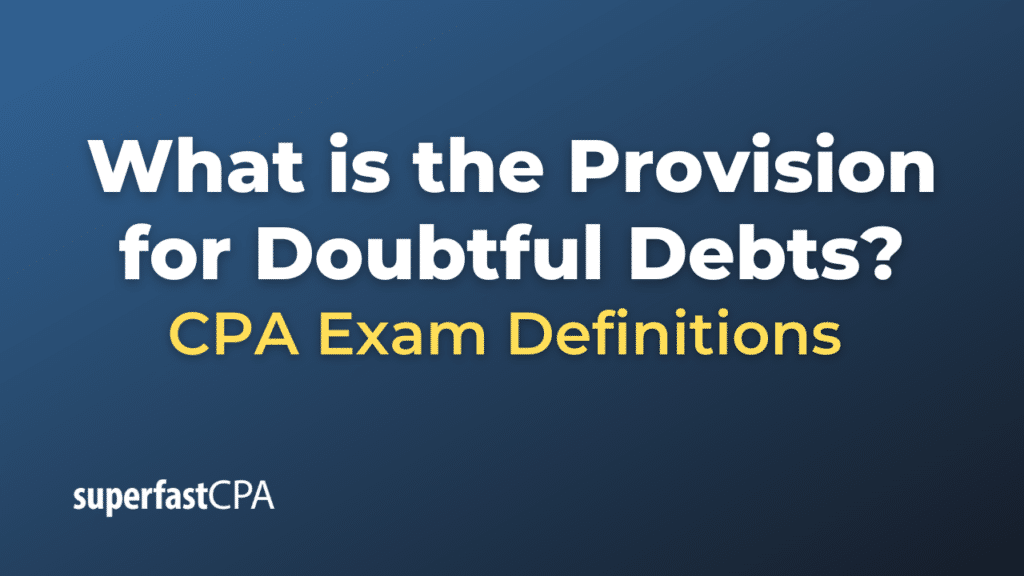Provision for Doubtful Debts
The provision for doubtful debts, also known as the allowance for doubtful accounts or bad debt reserve, is an estimated amount of receivables that a company does not expect to actually collect. It’s a contra-asset account, meaning it reduces the total value of the company’s accounts receivable.
The provision is established as an expense on the income statement, thus lowering net income. On the balance sheet, it reduces the amount of accounts receivable to reflect a more accurate picture of the amount the company expects to collect.
This is done in accordance with the principle of conservatism in accounting, which suggests it’s better to anticipate losses, but not to anticipate gains.
The provision for doubtful debts is based on the company’s historical experience of customer payments, its knowledge of its customers’ financial health, and the general economic climate.
For example, if a company has accounts receivable of $1,000,000 and it estimates, based on previous experience and economic conditions, that 2% of these receivables will not be collectible, it would set up a provision for doubtful debts of $20,000 (i.e., $1,000,000 * 2%). This $20,000 would be recognized as an expense on the income statement, and the net accounts receivable on the balance sheet would be reduced to $980,000 (i.e., $1,000,000 – $20,000).
As the company writes off specific uncollectible accounts, it would reduce the provision accordingly. If the actual write-offs exceed the provision, the company would need to increase the provision, which would result in additional bad debt expense. If the actual write-offs are less than the provision, the company could reduce the provision, which would reduce the bad debt expense.
Example of the Provision for Doubtful Debts
Here’s an example of how the provision for doubtful debts works:
Year 1: XYZ Corp. has sales on credit (accounts receivable) of $1,000,000 for the year. Based on their past experience, they estimate that 1% of these sales will not be collectible. So, they create a provision for doubtful debts of $10,000 (i.e., $1,000,000 * 1%). This $10,000 is recorded as bad debt expense on the income statement, reducing net income. On the balance sheet, the accounts receivable is reported at $990,000 ($1,000,000 – $10,000), which reflects the amount they expect to collect.
Year 2: In Year 2, XYZ Corp. finds that $8,000 of Year 1’s accounts receivable is indeed uncollectible. They write off this amount against the provision for doubtful debts. The write-off does not impact the income statement in Year 2, as the expense was already recognized in Year 1 when the provision was created. After the write-off, the provision for doubtful debts is $2,000 ($10,000 – $8,000).
Also in Year 2, XYZ Corp. makes additional sales on credit of $1,200,000. They estimate that 1% of these will not be collectible, so they create an additional provision of $12,000 (i.e., $1,200,000 * 1%). This is recorded as bad debt expense on the income statement.
At the end of Year 2, the total provision for doubtful debts is $14,000 ($2,000 remaining from Year 1 + $12,000 for Year 2), and the net accounts receivable is $2,186,000 ($1,000,000 – $8,000 + $1,200,000 – $12,000).
This example shows how the provision for doubtful debts is used to anticipate potential losses from uncollectible accounts receivable, how it’s used to write off specific uncollectible accounts, and how it’s updated each year based on new sales and collections experience.













